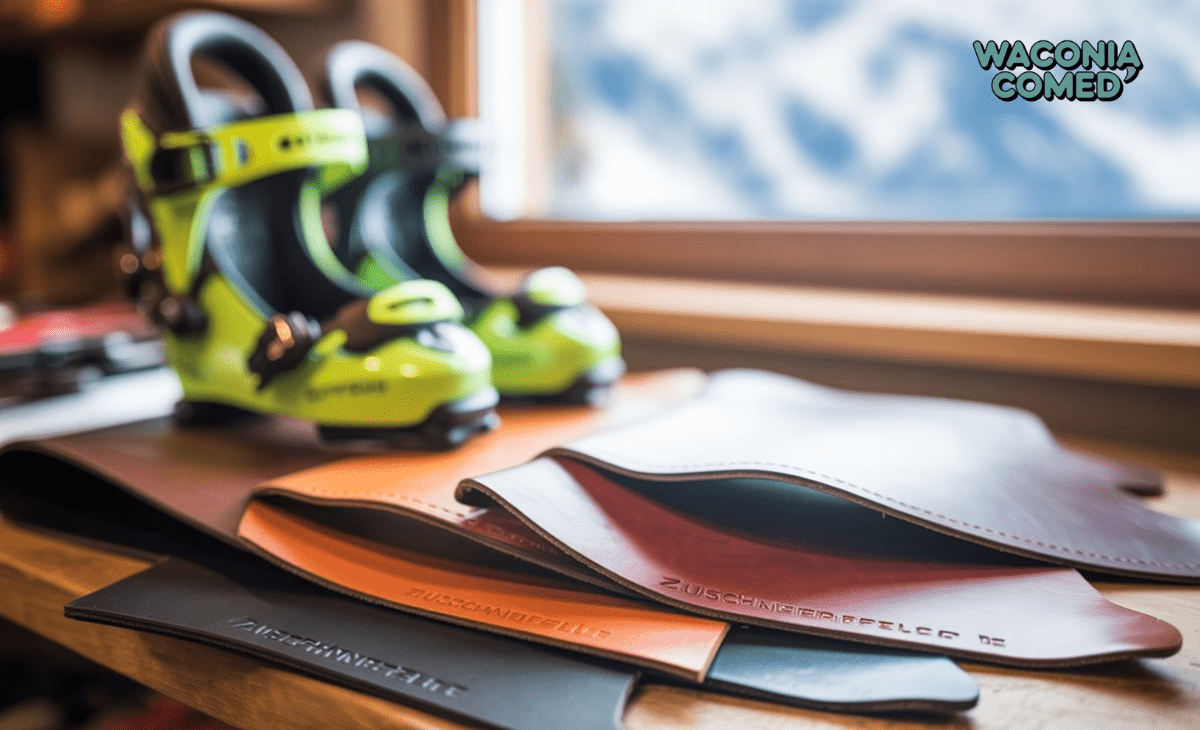In the world of ski touring, zuschneidfelle holds a place of absolute importance. These specialized climbing skins, attached to the underside of touring skis, enable uphill movement in snowy and icy terrain. Without them, ascending steep slopes would be a frustrating, if not impossible, task. For both beginners and seasoned mountaineers, choosing the right zuschneidfelle is about ensuring safety, performance, and energy efficiency during demanding climbs.
The word itself gives a clue to its function. “Zuschneid” translates to “cut to size,” and these skins are precisely trimmed to fit individual skis. A properly cut skin provides maximum coverage, ensuring grip on the uphill while still allowing glide when needed. This delicate balance is what makes ski touring both possible and enjoyable.
What exactly are Zuschneidfelle?
Zuschneidfelle are strips of fabric engineered to allow forward motion but block backward sliding. They were originally crafted from animal skins, particularly seal skin, which naturally offered this one-directional fiber structure. Modern designs, however, use advanced materials like mohair, nylon, or blends of both, creating more efficient and durable options.
Each skin is fixed to the ski base using special adhesive and secured with tip and tail attachments. When properly trimmed and applied, the skin becomes an invisible ally, turning daunting ascents into manageable climbs.
Why Zuschneidfelle Are Indispensable
For anyone considering ski touring, zuschneidfelle are not optional accessories but core equipment. They provide reliable traction, allowing skiers to climb with steady progress rather than slipping backward with each step. This grip is not only practical but vital for safety, especially in icy or avalanche-prone areas.
Another reason these skins matter is energy efficiency. Without them, a skier would waste tremendous energy attempting to climb, which could lead to fatigue and unsafe conditions. By offering just the right mix of glide and grip, zuschneidfelle help conserve strength, enabling longer tours and more ambitious routes.
Different Types of Zuschneidfelle
Not all zuschneidfelle are created equal, and choosing the right type depends on skiing style, terrain, and snow conditions. Mohair skins are prized for their smooth glide, making them a favorite among competitive ski tourers who prioritize speed. However, they tend to wear down faster than other options. Nylon skins, in contrast, are known for their durability and strong grip, ideal for rugged climbs and long-term use. Somewhere in between are mixed skins, blending mohair and nylon to create a versatile balance suitable for most recreational skiers.
How to Select the Perfect Zuschneidfelle
Selecting the right skin is less about guesswork and more about understanding your needs. Ski length and width determine the baseline, as skins must cover the ski base without overlapping the edges. The terrain also plays a critical role; skiers tackling icy, steep slopes often prioritize grip, while those traversing long, flat distances lean toward glide. Snow conditions further complicate the choice. Wet, heavy snow typically benefits from synthetic skins, while light, powdery conditions pair well with mohair. Experience also matters. Beginners often choose mixed skins for their forgiving nature, while advanced skiers may experiment with more specialized options.
Proper Way to Cut Zuschneidfelle
The cutting process is one of the defining steps that gives zuschneidfelle their name. To begin, the skin is aligned with the ski’s base, adhesive side down. One edge of the skin is matched to the ski’s edge, while the other side is carefully trimmed with a special cutter. This trimming must be precise, leaving a small margin along each ski edge to keep the metal edges exposed for turns and control. After adjusting the length to fit the ski, tip hooks and tail clips are fixed in place. A correctly cut skin should sit flush, offering reliable grip without gaps that could let snow slip under.
Mistakes to Avoid with Zuschneidfelle
Even the best equipment can fail when misused. One common mistake is storing skins while still wet, which damages the adhesive and reduces effectiveness over time. Another error is trimming them too narrowly, which compromises grip on ascents. Some skiers also forget to refresh the glue after seasons of heavy use, causing skins to peel off mid-tour. Finally, choosing skins that do not match ski dimensions often results in poor performance. Avoiding these pitfalls helps ensure the investment in zuschneidfelle lasts for many seasons.
Business Value of Zuschneidfelle
Beyond personal use, zuschneidfelle represent a growing market for ski retailers and rental services. Shops that offer professional cutting and fitting services stand out, as skiers prefer expertise when handling critical gear. Stocking eco-friendly options also appeals to environmentally conscious consumers who are increasingly influencing the outdoor industry. Rental businesses, on the other hand, gain credibility by maintaining high-quality, pre-fitted skins for clients, ensuring safe and enjoyable tours for all experience levels.
Caring for Zuschneidfelle
Longevity depends heavily on care. After each use, skins should be dried in a cool environment, never on heaters or direct sunlight, as excessive heat damages both fabric and glue. Storing them with protective mesh sheets maintains the adhesive layer, preventing it from sticking to itself. Over time, adhesives weaken, but this can be restored by re-gluing or using transfer sheets. Regular inspection for fraying or weakened fibers ensures that skins remain reliable in demanding conditions.
Real-World Example of Zuschneidfelle in Action
Consider a ski touring group preparing for an early spring climb in the Alps. The terrain is a mix of icy ridges and soft, melting snow. One skier uses mohair skins, gliding effortlessly on the flatter sections but struggling for grip on icy inclines. Another uses nylon skins, moving slower but maintaining secure traction even on the steepest pitches. A third, equipped with mixed skins, manages both glide and grip, making steady progress throughout. This scenario highlights why choosing the right zuschneidfelle can determine not only performance but also safety and overall enjoyment.
FAQs about Zuschneidfelle
What are zuschneidfelle made of?
They are made from mohair, nylon, or a combination of both, each offering a balance of glide and grip.
Do zuschneidfelle fit all skis?
No, they must be cut to match the specific length and width of your skis.
How long do zuschneidfelle last?
With proper care, skins can last several seasons, though adhesive may need refreshing.
Can zuschneidfelle be reused after cutting?
Yes, they are reusable and can be re-glued or maintained over multiple tours.
Are mohair skins better than nylon?
It depends on use. Mohair offers better glide, while nylon provides stronger grip and durability.
How do I store zuschneidfelle in summer?
Keep them dry, cool, and protected with mesh sheets to preserve adhesive for the next season.
You might also like : beliktal Secrets of Nature and Heritage
Conclusion
Zuschneidfelle are far more than an accessory. They are an essential tool that enables skiers to climb safely, efficiently, and with confidence. Choosing the right type, cutting them correctly, and caring for them properly makes every tour smoother and safer. For businesses, offering quality zuschneidfelle and professional fitting services builds trust and long-term customer loyalty.
If you’re planning your next ski touring adventure, investing in the right zuschneidfelle is one of the smartest decisions you can make. Equip yourself with the right pair, maintain them well, and enjoy every climb without hesitation.

